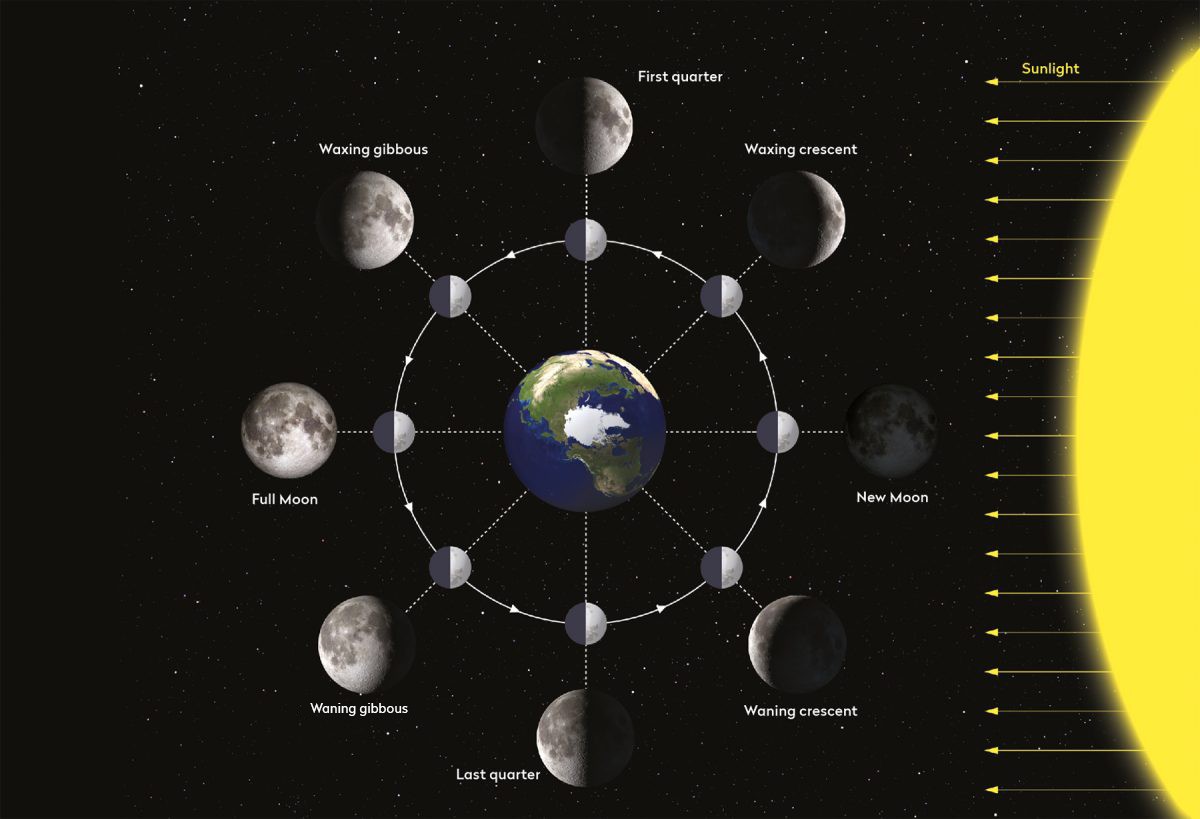The Moon, a celestial neighbor, always presents the same face to Earth. We recognize the familiar craters and dark plains, even as its phases wax and wane. But why do we only see one side of the Moon? This phenomenon stems from a fascinating dance between the Moon and Earth, known as tidal locking.
The Moon’s Synchronous Rotation
The Moon does rotate, completing a full spin roughly every 27.3 days. Intriguingly, this is also the exact time it takes the Moon to orbit Earth. This synchronized rotation, also known as tidal locking, is the reason we always see the same lunar landscape.
While tidal locking keeps one hemisphere perpetually facing Earth, a subtle wobble called lunar libration allows us to glimpse slightly more than half the Moon’s surface over time. We see a bit beyond the edge, around 59% in total, due to this rocking motion.
The Tidal Locking Process
Billions of years ago, the Moon spun much faster. However, Earth’s gravitational pull exerted a strong influence on the young Moon, creating a bulge of rock on the side facing Earth. This bulge acted as a brake, gradually slowing the Moon’s rotation until it reached a state of equilibrium, where its rotation matched its orbital period.
Once this synchronous rotation was achieved, the Moon became tidally locked, forever showing the same face to its terrestrial companion. If the Moon rotated faster or slower than its orbital period, we would indeed see all sides.
Illumination and the Lunar Phases
Even though we always see the same side of the Moon, its appearance changes nightly due to the lunar phases. These phases, from new moon to full moon and back again, are a reflection of how much of the sunlit side of the Moon faces Earth at any given time.
Remember, half the Moon is always illuminated by the Sun. During a new moon, the illuminated side faces away from us, while a full moon occurs when the entire sunlit face is visible from Earth. The transitions between these phases, including crescent, quarter, and gibbous moons, complete a cycle roughly every 29.5 days.
The Far Side: Not Always Dark
The side of the Moon we never see is often mistakenly called the “dark side.” However, it’s more accurately called the “far side.” Just like the near side, the far side experiences both day and night as it orbits Earth. It’s simply always facing away from our perspective.
Synodic vs. Sidereal Months: Why the Difference?
The 29.5-day lunar phase cycle (synodic month) is slightly longer than the Moon’s 27.3-day orbital period (sidereal month). This difference arises because as the Moon orbits Earth, our planet is also moving around the Sun. It takes the Moon a little extra time to align with the Sun and Earth again, completing the cycle of phases. The Moon’s tilted orbit, about 5 degrees relative to Earth’s orbit, explains why solar and lunar eclipses are relatively infrequent events. The tilt usually results in a near miss, rather than a perfect alignment for an eclipse.

